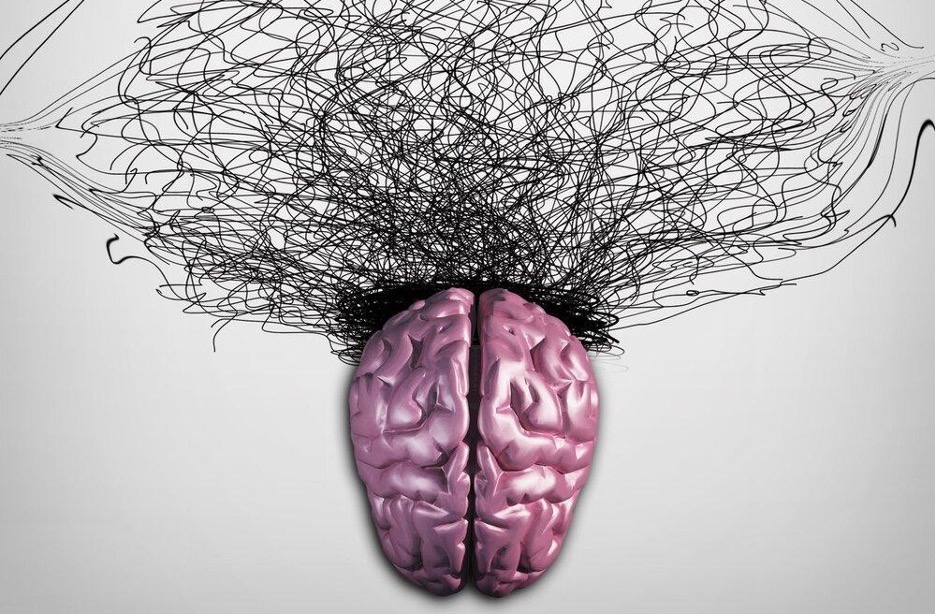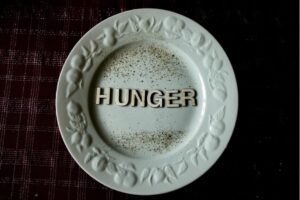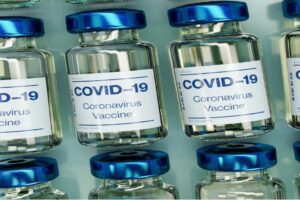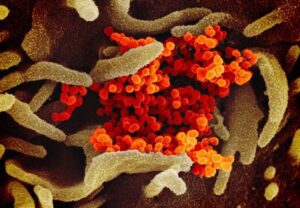This publication is in proud partnership with Project UNITY’s Catalyst Academy 2023 Summer Program.

Source: Alberto Andrei Rosu
Anxiety is all consuming. It bleeds into your daily life, fills your head, controls you, enough to tell you what you can do, and cannot do. It keeps you up at night but keeps you in bed in the morning. It affects people’s relationships, their goals, and their future. Generalized Anxiety Disorder (GAD) affects over 6.8 million people, yet only 43% receive treatment1.
As the pandemic unfolded, mental health issues rose in prevalence and public concern. Even though the pandemic has slowed down, technology, economic and environmental struggles are all continuing to grow, contributing to an ongoing mental health crisis2. For example, a study done recently found that there was a direct relationship between depression and anxiety and frequent social media exposure3. Anxiety is linked to the economy as well – when our economy suffers, so d0es our mental health, a report in the Harvard Business Review indicating that there are lower suicide rates when the economy is doing well then when it is not4.
Traumatic events too influence mental health on a societal scale, and socioeconomic context mediates the intensity of the effect. For example, after Hurricane Katrina, the event itself and the economic fallout after both contributed to declining mental health5. Some even went on to experience post-traumatic stress disorder (PTSD).
In a country that devotes a major amount of money to medical care, mental health treatment is an area that can be improved. One-quarter of individuals in the US report having a mental health diagnosis, such as anxiety, yet many lack the access and knowledge to help care for it. In addition, the US to has the highest suicide rate among wealthy countries6. Many underlying factors are likely contributing to the increased rates of diagnosis – housing instability7, access to basic necessities8, along with many others.
As mental health issues are being put in the spotlight, there have been policies implemented that strive to combat this issue. Recently, Dr. Vivek Murthy, the 21st U.S. Surgeon General, has worked with the U.S. The Department of Health and Human Services to create a platform (Framework for a National Strategy to Advance Social Connection), focused on the most pressing public health issues facing the United States12. Murphy and his team have engaged in efforts to educate the public on how mental health is influenced by various psychological diseases, such as anxiety, and has helped provide resources for the public to take action and get answers about questions on mental health. Helpful illustrations on mental health topics allow the programs materials to reach a broad audience, likely resulting in a more profound and long-lasting impact.
Another example of public health efforts is the work of the Anxiety Disorders Resource Center. To make an impact at an early stage, the Center provides videos and self-guides for both parents and teens13. These resources contain specific information such as where and how to seek help and how to help specific age groups. Videos are made with medical professionals and designed to create a sense of community among the audience.
A third organization, the Center for Treatment of Anxiety and Mood Disorders, has taken on the responsibility of aiding those struggling with anxiety while providing personalized services and customized technology resources. The organization incorporates specific treatment programs along with blogs and papers to maximize their impact.
To expand on these resources and make them more accessible, it will be important to encourage more workshops and campaigns in efforts, especially to target low-income communities and bring greater awareness. Ongoing efforts to decrease the stigma around seeking mental health care are also needed. Even if resources and help are in place, advocating for their use equally, if not more important.
References
- Facts & Statistics. Anxiety & Depression Association of America, https://adaa.org/understanding-anxiety/facts-statistics.
- Mental Health. National Institute of Health COVID-19 Research https://covid19.nih.gov/covid-19-topics/mental-health.
- Karim, F., et al. (2020). Social Media Use and Its Connection to Mental Health: A Systematic Review, Cureus 12, e8627.
- Galea, S. (2020). Anxiety as a public health issue. Harvard Business Review https://hbr.org/2020/05/anxiety-as-a-public-health-issue.
- Rhodes, J. & Chan, C. (2010). The Impact of Hurricane Katrina on the Mental and Physical Health of Low-Income Parents in New Orleans, Am. J. Orthopsychiatry 80, 237–247.
- Tikkanen, R., et al. (2020). Mental Health Conditions and Substance Use: Comparing U.S. Needs and Treatment Capacity with Those in Other High-Income Countries. Commonwealth Fund Issue Briefs, doi:10.26099/09ht-rj07.
- Bushman, G. & Mehdipanah, R. (2022). Housing and health inequities during COVID-19: findings from the national Household Pulse Survey. J. Epidemiol. Community Health 76, 121–127.
- Wright, L., Steptoe, A., & Fancourt, D. (2022). Are we all in this together? Longitudinal assessment of cumulative adversities by socioeconomic position in the first 3 weeks of lockdown in the UK, J. Epidemiol. Community Health 74, 683–688.
- Alegría, M., NeMoyer, A., Falgas, I., Wang, Y. & Alvarez, K. (2018). Social Determinants of Mental Health: Where We Are and Where We Need to Go. Curr. Psychiatry Rep. 20, 95.
- Braveman, P., Egerter, S. & Williams, D. R. (2011). The social determinants of health: coming of age. Annu. Rev. Public Health 32, 381–398.
- Marmot, M., Friel, S., Bell, R., Houweling, T. A. & Taylor, S. (2008). Closing the gap in a generation: health equity through action on the social determinants of health. Lancet 372, 1661–1669.
- Youth Mental Health. Office of the U.S. Surgeon General, https://www.hhs.gov/surgeongeneral/priorities/youth-mental-health/index.html.
- Current Priorities of the U.S. Surgeon General. Office of the U.S. Surgeon General, https://www.hhs.gov/surgeongeneral/priorities/index.html.
Related Posts
The H.U.N.G.E.R. Initiative (Helping Underserved Neighborhoods Generate Equitable Resources)
This publication is in proud partnership with Project UNITY’s Catalyst Academy 2023...
Read MoreCaribbean History through Genetics and Archaeology
Figure 1: A map of the Caribbean Islands from 1894...
Read MoreThe I.D.E.A. Initiative: Infectious Disease Educational Awareness
This publication is in proud partnership with Project UNITY’s Catalyst Academy 2023...
Read MoreThe “Old Friends” Hypothesis and the COVID-19 Pandemic
Authors: Sakeena Badrane1, Vivek Babu2, Sanah Handu1 1University of Pittsburgh,...
Read MoreMind Missing Out? Fear of Missing Out and the Brain
Figure: A person scrolling through news articles on their smartphone....
Read MoreConcierge Medicine Could Reduce Senior Health Inequities in Illinois
This publication is in proud partnership with Project UNITY’s Catalyst Academy 2023...
Read MoreAkshaya Ganji






